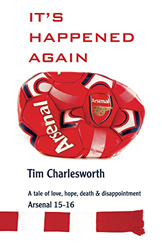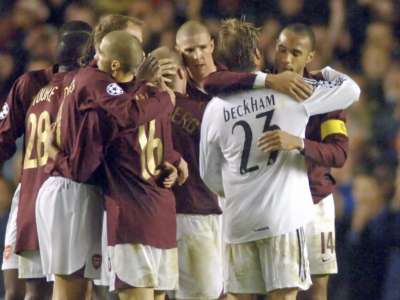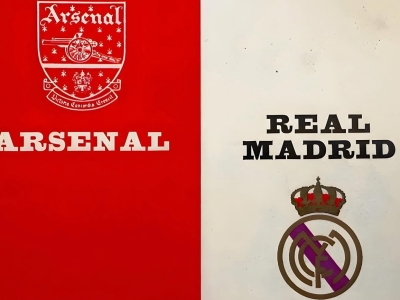Last season was a fascinating one in many ways, but in the end it was a season of failure. There are several explanations for that failure, but there is one that I would like to look at in a little more detail here, the lack of rotation.
Arsene Wenger has always seemed to struggle a bit with rotation, putting a high value on stability and being naturally reluctant to change a winning team. English football has changed a lot since Arsene arrived at Arsenal, indeed he has been the catalyst for many of those changes with his methods widely reported, admired and copied (in his early years at least). One of the things that he undoubtedly brought to the league was improved player conditioning (can it really be true that Arsene Wenger introduced Tony Adams to the idea of stretching? – this seems incredible, but Adams has said it so many times I feel there must be some truth to it.) When we watch the Arsenal teams of the late 90s and early 00s, they appear to have a physical advantage over their opponents in strength and speed. This advantage appeared to evaporate in the mid-00s and injuries became more commonplace, not just at Arsenal, but for all teams. The other teams caught up with Arsenal’s methods and the resulting injuries were almost inevitable - greater conditioning means that players are closer to ‘the limit’: they will cover more distance in a match, and collisions will be more powerful.
The answer to the problem of more injuries was to have bigger squads and more rotation. Rotation was obviously necessary to cover the injuries, but we also began to see the use of ‘preventative rotation’, where managers rest players in order to avoid injuries, and give them the edge of ‘freshness’ when they came back into the team. Gerard Houllier, at Liverpool, was the earliest exponent of this tactic. It didn’t bring success in the league, but interestingly, did deliver in the Champions League, where Liverpool were surprisingly effective. By rotating his team early in the season, Houllier was sacrificing league performance, but also delivering less fatigued players to the knockout stages of the Champions League. The man who really mastered the art of rotation, however, was Alex Ferguson. By the mid-2000s, Ferguson was beginning to look like yesterday’s man, eclipsed by the bright new world of Arsene Wenger and then Jose Mourinho. But Ferguson didn’t go away, he learnt, adapted, and came back with a new approach that propelled his team back to the top of English football. By the end of the 00s he was regularly rotating his large squad, and the good days were back.
Arsenal struggled to compete in this brave new world that they had done so much to create. Under financial restraints, our squads were noticeably smaller than those of Man U and Chelsea in particular, allowing less scope for rotation. But even within the smaller squads, Wenger seemed sceptical about the wisdom of rotation, preferring stability in his starting line-ups. The result seemed to be a lot of injuries, costing Arsenal dear in terms of results. Many theories have been postulated to explain these injuries, but there can be little doubt that Wenger was physically demanding too much of a series of young players who were not robust enough to deliver. This was certainly a contributory factor, at the very least, to a string of seasons where it was Arsenal’s squad, as much as its team, that was found wanting.
2015-16 promised Arsenal’s strongest squad to date, with at least 2 strong players in every position. This turned out to be a bit of an illusion as injuries (Coquelin, Cazorla, Wilshere, Welbeck, Alexis, Ramsey, Walcott, Rosicky) and failures of form (Arteta, Debuchy, Walcott, Giroud) meant that the squad available to Wenger was much thinner than it first appeared. If I was to pick a single moment that the season went wrong, it would be the Dinamo Zagreb game (Champions League Matchday 1). This is my take on what happened:
1. Wenger chose a ‘rotation’ eleven against Dinamo in an attempt to keep his squad fresh. He chose six players who were not first choice starters at the time (Ospina, Debuchy, Gibbs, Arteta, The Ox and Giroud)
2. Defeat at Dinamo, combined with the collapse at home against Olympiacos (which also involved rotation), left Wenger with two choices: make 100% effort to qualify from the group, or give it up as a lost cause and play weak teams in the rest of the CL games to keep the squad fresh.
3. Wenger chose to fight for qualification, but this meant that he had to play his strongest team in every game (we were also challenging for the Premiership)
4. The lack of rotation took its toll in November with injuries to players who had ‘given too much’: Cazorla, Coquelin, Alexis and Walcott. The loss of quality was devastating, especially in central midfield.
5. These injuries meant that there was no longer any room to rotate the squad – there were simply not enough players left, with unexpected options such as Iwobi, Flamini and Campbell getting regular games.
6. The warning signs came on Boxing Day, when Wenger started the same team for the fourth match in succession. Southampton destroyed it (4-0).
7. By February the team was falling apart at the seams. A demoralising (and harsh) home defeat by Barcelona in the Champions League triggered a collapse in the league with only one point taken from three games as we exited both the FA Cup and Champions League.
8. Giroud played 15 consecutive games from December to February, averaging just 4.9 days between games. By the end of this spell he had lost all goalscoring form, and looked what he was: tired.
9. Our squad simply had too many ‘games in the legs’, and not enough quality, factors which were decisive in defeats to Man U, Swansea and Barcelona
So, this season sees an even deeper squad, presumably in an attempt to avoid last season’s problems and make rotation more achievable. We are more robust in central midfield and central defence in particular: Xhaka seems to give us more depth in the creative department; some of the injury prone players (Arteta, Rosicky and Wilshere) are gone; and there are fewer areas of potential weakness (right back cover is the obvious one). The greatest weak spot seems to be at centre forward, although this is more of an issue of quality than depth. Everything is set up for Arsene Wenger to deliver his greatest ever season of rotation. Will he grasp the nettle and be prepared to sacrifice early performance for rotation? Will we be fortunate with injuries to maintain our options, or will we see a repeat of the ‘rotation by injury’ that cost us so dear last season?
We are now into the part of the season that falls between the first two interlulls. This is a period with many games in quick succession for the Champions League teams (7 games in 22 days for Arsenal). Last season, Arsene tried to rotate the team in this period, but the policy delivered poor results and he abandoned it, with disastrous consequences down the line. This season, we have seen rotation between the Southampton and PSG games already, albeit less risky than the rotation in the Dinamo game last season. So far, it has worked, although it nearly looked like a mistake in the Southampton game. Hopefully the results so far will encourage Arsene to continue to rotate. If he doesn’t, we are likely to pay the price again later in the season.
If you liked this article, you might enjoy Tim’s book “It’s Happened Again”, which is now available on Amazon (print and Kindle versions). Read a sample chapter at www.itshappenedagain.com










